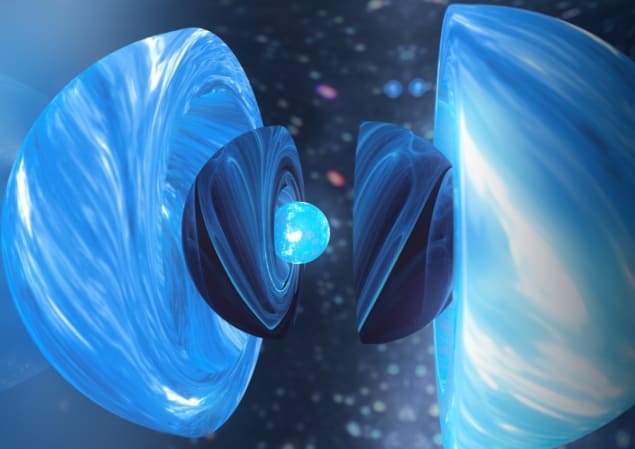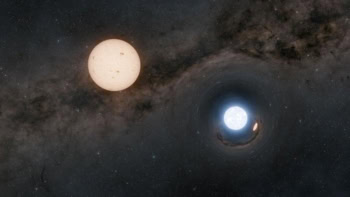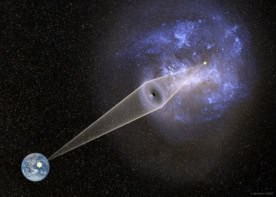
New insights into the inner structure of rapidly-rotating neutron stars have been gleaned by astronomers in Australia and Canada, who have studied the time evolution of a glitch – a sudden increase in the rate of stellar rotation. Their observations of the Vela pulsar suggest that glitches could be governed by interactions between three different rotating regions of the neutron star.
A pulsar is a spinning neutron star that broadcasts a lighthouse-like beacon of electromagnetic pulses at a constant frequency. Occasionally, however, the frequency of some pulsars can increase slightly in a process that astronomers call a glitch.
Vela is a pulsar that is about 1000 light-years from Earth and emits a bright beacon of radio waves. It spins at about 11 Hz and undergoes a glitch about once every three years, speeding-up by about 10-5 Hz.The neutron star has a radius of just 20 km yet has a mass greater than that of the Sun. It is made of neutron-rich matter that is tightly packed at densities on par with that of an atomic nucleus.
Superfluid neutrons
Astrophysicists have a poor understanding of the interior structure of neutron stars, which is why they are keen on understanding why pulsar glitches occur. A popular model describes neutron stars as comprising two solid crustal layers that surround a superfluid core of neutrons. The outer crust is believed to comprise nuclei that are densely-packed in a crystalline lattice that is permeated by an electron gas. In the inner crust, higher pressures fuse some electrons and protons to form a superfluid of neutrons that permeates the solid lattice in this layer. These three regions are believed to be decoupled, and could therefore rotate at different frequencies
Now, scientists at Monash University, McGill University and the University of Tasmania have reanalysed radio observations of a glitch in the rotation of Vela that was observed in 2016. The data appear to reveal a small drop in frequency preceding the glitch. The data also provide the first evidence that the glitch “overshoots” the final rotational frequency of the star and this is corrected by a small rebound in frequency.
To understand this behaviour, the team devised several models of how the internal structure of a neutron star could affect a frequency change and compared their predictions with the data. Statistical analysis suggests that the process is best described by a model that involves an initial slowing of the rotation, followed by a jump in frequency. This favoured model also includes couplings between the lattice crust, inner crust and core of the neutron star in terms of two exponential time constants.
“Second soup”
Paul Laskey of Monash University says the team’s analysis suggest that the glitch occurs when the superfluid inner crust moves outwards, striking the rigid outer crust and accelerating its rotation. “But then, a second soup of superfluid that moves in the core catches up to the first, causing the spin of the star to slow back down,” he explains.
This overshoot had been predicted by astrophysicists including McGill’s Vanessa Graber, who was involved in this study.
The observed slowing before the glitch occurs puzzles the team, as Monash’s Greg Ashton explains. “We actually have no idea why this is, and it’s the first time it’s ever been seen! We speculate it’s related to the cause of the glitch, but we’re honestly not sure”.
The study is described in Nature Astronomy.



